Stationary, collapsible piping systems in the garden,
To equip the water supply in the garden or in the garden should be at least in order to save your time and effort: without a water supply system, at best, we will have to deploy watering hoses every day, and at worst - run around with buckets.
Of course, it will be necessary to work hard to lay a water-carrying circuit, and the price of materials will be quite substantial, but all these costs will quickly pay for themselves by increasing the level of comfort and increasing yields.
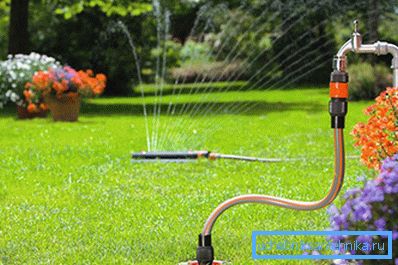
Stationary sludge collapsible?
Starting planning, we need to initially decide what system we will do - stationary, which is assembled once, or collapsible, which we will re-lay every season.
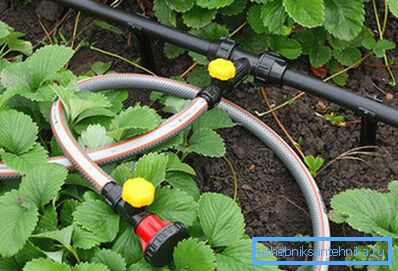
Both options have both advantages and disadvantages, and for comparison it is worth analyzing the table below:
| Benefits | disadvantages | |
| Stationary |
|
|
| Folding |
|
|
As you can see, it all depends on how you will use the system. Well, since the stationary design is made somewhat more difficult, then we will describe it exactly. Master this technique, and with a simpler question will not arise!
Mounting technique
We design the system
Our installation instructions for garden or garden plumbing provides for preparatory work. And here planning comes to the first place, because a high-quality system can be made only according to a well-thought-out project.
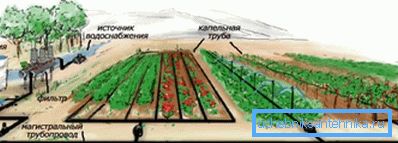
It is necessary to take into account such moments:
- To begin, we draw up the layout of all buildings, flower beds, beds and trees. This will help us to arrange the contours of water supply as efficiently as possible, thereby saving both materials and time for arrangement.
- Then we focus on the depth of embedment. The minimum depth is considered to be 30 cm, but if the pipe passes under the bed or flowerbed, then it is better to arrange it at a level of 50 - 70 cm. So we will protect the structure from damage when digging.
- It is desirable that all pipes be located at an inclination relative to the point of water intake, so that appropriate adjustments should be made in the trench profile.
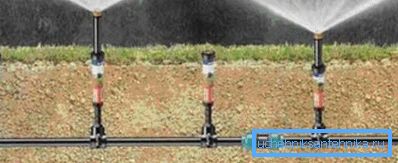
Tip! At the lowest point of the pipe is to dig a pit in which we will install a drain valve. It will be used to remove residual water at the end of the season: if this is not done, the pipes will freeze and burst under pressure of ice.
- On the whole system should provide several conclusions. At each terminal, a convenient faucet is installed, protruding at least 10 cm above the ground: either a hose or a fixed irrigation system can be connected to it.
- For the assembly of systems it is best to use polyethylene pipes of 20-25 mm. When installing a collapsible water supply system, the pipes can be replaced with hoses: they are assembled faster and stored in more compact bays.
We lay pipes
The installation process itself is quite simple:
- To begin with, using the designed scheme, we dig out trenches of the appropriate depth.. The bottom of each trench is leveled, cleaned of large stones, then we fall asleep with sand. Sand pillow layer up to 5 cm well ram.
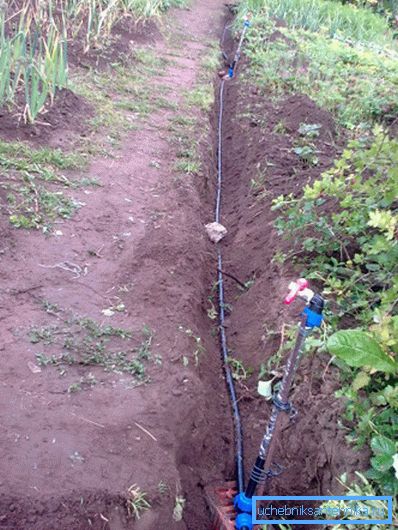
- We connect a valve to the water supply source, which, if necessary, will shut off the water in the system. If we plan to install plumbing from several circuits, then immediately after the valve you can install a collector.
- We attach a polyethylene pipe to the valve or manifold, fixing it with a clamp fitting.
- Laying the pipe in a trench, noting the installation location of the point of consumption.
- At each point of consumption we cut a tee into the pipe. We attach a vertical branch pipe with a pre-installed crane to the tee.
Note! In some cases, sprayers are mounted directly on the terminals of the main pipe for automatic irrigation. Most often, such a system is collected on lawns with homogeneous vegetation.
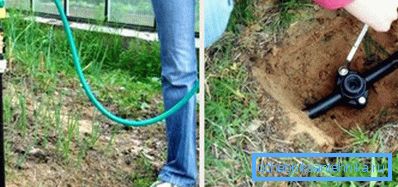
- As we noted earlier, at the lowest point of the system we install a tap to drain excess water..
- After the assembly is completed, we check the work of the plumbing under pressure, making sure that there are no leaks anywhere - it will be much more difficult to repair them after falling asleep trenches.
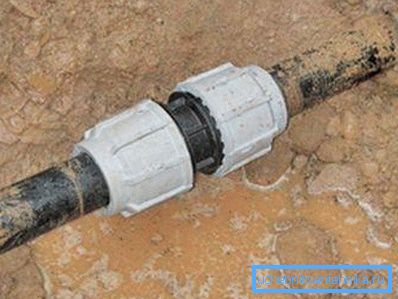
- Fill up the trenches, compacting the laid soil. From above we put the cut out layers of sod or we pour in the previously removed fertile soil layer.
Conclusion
By constructing a water supply system in the garden with our own hands, we will get an excellent opportunity to irrigate the beds, trees, bushes and lawns with minimal labor costs. Such a system is very convenient to use, because it is definitely worth spending time and money on its installation. More information about the method of laying pipes can be in the video in this article.